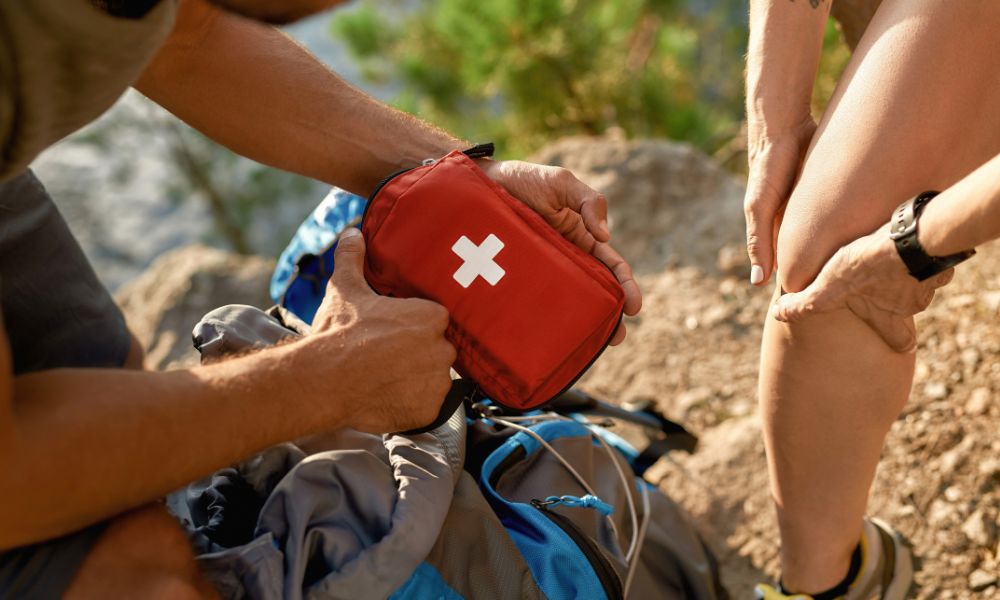Venturing into the great outdoors can be an exhilarating experience, but it also brings its share of risks and unexpected events, from minor scrapes and insect bites to more serious injuries. Knowing basic first aid is essential for anyone who loves to explore nature.
Let’s look at some important first-aid tips that every outdoor enthusiast should know and keep in mind during their adventures.
Carry a First Aid Kit
Before embarking on any outdoor adventure, it’s crucial to pack a basic first aid kit. This could include items such as bandages, antiseptic wipes, gauze, tweezers, and pain relief medication. Make sure to tailor your kit according to the activities you will be doing and the location of your adventure. For example, if you’re camping near water, include items like a waterproof bandage and moleskin for blisters.
Know How To Treat Cuts and Scrapes
Minor cuts and scrapes are common in outdoor activities, so knowing how to clean and dress them is crucial. To treat such wounds:
- Begin by washing the wound with clean, running water.
- Gently pat it dry and apply an antiseptic ointment before covering it with a bandage.
- Keep an eye on the wound and change the dressing regularly.
Be Prepared for Insect Bites
Insects are plentiful in the great outdoors, and their bites can range from mildly irritating to potentially dangerous. To prevent bites, wear insect repellent and cover exposed skin with clothing. If you get bitten, clean the area with soap and water, apply a cold compress to reduce swelling, and take an antihistamine for any itching or discomfort. Knowing ways to identify different insects and their bites can also help determine the appropriate treatment.
Learn How To Handle Sprains
Twisting or spraining an ankle is common while hiking or participating in other outdoor activities. When this happens, remember the acronym RICE: rest, ice, compression, and elevation. Rest the injured area, apply ice to reduce swelling, use a compression bandage to support the joint, and elevate the affected limb above heart level.
Know How To Identify and Treat Heat-Related Illnesses
When spending time outdoors, it’s important to be aware of the signs and symptoms of heat-related illnesses such as heat exhaustion and heat stroke. These include nausea, dizziness, confusion, and a high body temperature. If you or someone in your group experiences these symptoms, move to a cooler area, loosen tight clothing, and drink plenty of fluids.
Being equipped with first aid knowledge is just as necessary as having the right gear when you head outdoors. These basic tips will prepare you to deal with common scenarios, but comprehensive first-aid training is an important recommendation for all outdoor enthusiasts. Beyond prevention and immediate response, understanding when to seek professional medical attention is vital. Remember to prioritize safety, keep your skills updated, and encourage your adventure partners to be informed. With these precautions, you can safely enjoy the beauty and thrill of nature’s playground.


